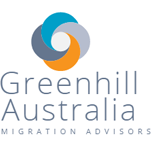05 Feb Resident Return Visas are at record high processing times
Whilst becoming a permanent resident allows you or your client to remain in Australia indefinitely, travel facility (i.e. ability to travel in and out of Australia) is generally limited to five years.
The purpose of resident return visa (RRV) arrangement is to allow certain people who are or have been permanent residents or citizens of Australia to travel internationally and return to Australia as permanent residents.
To support this, RRV arrangements:
- facilitate the re-entry into Australia of non-citizen permanent residents, former permanent residents and former citizens
- help ensure that only those applicants who have a genuine commitment to residing in Australia, or who are contributing to Australia’s well-being, retain the eligibility to return to Australia as permanent residents.
Applicants who can meet the residency requirement are granted further five-year visa permitting them to travel outside and return to Australia. These types of applications according to the Department of Home Affairs website are processed within three working days. According to Policy Advice Manual (which is not available to general public) over 80% of applicants fall within this category.
For those unlucky 20%, who are unable to meet the residency requirement, applicants are required to demonstrate substantial ties to Australia. These may include business, cultural and/or personal ties to Australia.
The issue at hand is that applications that do not meet the residency requirement are taking up to 68 days to process (again, according to the latest processing times published by the Department of Home Affairs). However, some cases are taking close to six months to be assessed which causes practical issues for those needing to depart Australia.
Substantial ties:
The substantial ties of benefit to Australia provision recognises that people’s lives change over time. In a mobile world, the provision recognises that people do spend time in other parts of the world for both personal and business reasons. However, factors such as the experience, skills and international contacts and reputation that people are developing while overseas and will bring back when they resettle in Australia, and the benefit this will bring into the future are also relevant considerations.
The benefits that accrue from Australia’s migration program vary depending on the visa stream. When assessing substantial ties of benefit to Australia for the purpose of an RRV application, Home Affairs will consider the following factors:
- Business visas recognise that the intention of the visa holder was to conduct or promote their business interests in Australia. Such activity does not necessarily require the business owner to live in Australia provided the applicant has an active and significant role in the business. For example if the business is actively trading in Australia there would be evidence of this as well as evidence of regular visits to or contact with the business or its interests in Australia.
- Family stream visas recognise the value of the family relationship of the visa holder. In the context of close family relationship visas such as the partner visa, the intention is to allow the family unit to live together. Therefore, a subsequent decision by an applicant to live overseas with their Australian citizen partner is the type of decision a reasonable person would generally make. Such a situation should be given considerable weight when deciding RRV applications, because their Australian citizen partner has an automatic right of entry to Australia.
- Skill stream visas recognise the holder has skills that are needed in Australia. It is a reasonable expectation that such applicants would have moved to Australia during the validity of their initial visa. If they have not yet resided in Australia, they should be able to demonstrate an imminent intention to domicile in Australia. It also needs to be recognised that if applicants have lived and worked in Australia, a benefit to Australia should have been realised from their migration. For example, it is not unreasonable that such people, who have already lived and worked in Australia, would seek to further enhance their skills and experience in the global market.
In general, it becomes increasingly difficult to demonstrate substantial ties of benefit over extended periods of absence. This is in part because the longer the period of absence the more difficult it is to continue to maintain ties of sufficient import to be considered ‘substantial’.
Solution?
Unfortunately, there is no immediate solution in sight to have your RRV application processed faster. It appears to be very unlikely that processing times will improve anytime soon. If you or your client applied for RRV whilst in Australia, you or your client are therefore also entitled to a Bridging Visa A. Bridging Visa A is granted automatically in most situations where an application for eligible substantial visa has been lodged. Where applicant is in Australia and is seeking a Resident Return visa (either subclass 155 or subclass 157), they are able to lodge paper based application for a Bridging Visa A. The reason that a separate form is needed to apply for the BVA in this situation is that the application for the RRV is made on Form 1085, and this form is not one of the approved forms that is listed in the legislative instrument made under Regulation 2.07A. At the same time, an applicant may also lodge a paper based application for a Bridging Visa B. The applications will therefore be processed in sequential order (Bridging Visa A granted in the first instance, followed by Bridging Visa B). This will allow an applicant to depart and return to Australia whilst their RRV is processing.
Final thoughts:
Given the lengthy processing times it is advisable to lodge fully documented decision ready RRV’s at least 4 months prior to expiry of the visa application in circumstances where residency requirements are not being met. This should hopefully save some from the headache of having to readjust their travel plans.

